INTRODUCTION
December 25th 2013 marks the twentieth anniversary of Batman: Mask of the Phantasm, the first feature-length animated Batman film and the only one to date to receive a theatrical release. While the film features an original narrative, it nevertheless borrows bits and pieces from several previous Batman stories. The most obvious influence, and one which has been acknowledged by the film's creators, is Mike W. Barr's Batman: Year Two (originally published in Detective Comics #575-578, June-September 1987). The film also references other stories, such as Frank Miller's Batman: Year One (1987) and the two Tim Burton Batman movies (released in 1989 and 1992). The purpose of this analysis is to highlight some of the parallels between Mask of the Phantasm and these earlier Batman stories. Some of these parallels will be conscious references on the part of the filmmakers, while others will likely be coincidental.
The plot of the film revolves around a mysterious masked vigilante known as the Phantasm. This character was based on the Reaper, the main antagonist in Batman: Year Two.
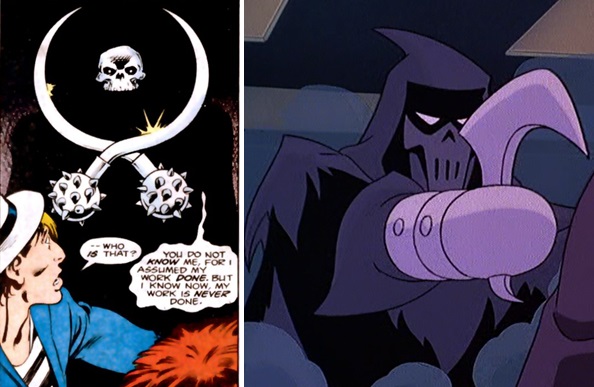
The Reaper and the Phantasm both wear hooded cloaks, skull-like masks and razor-sharp scythes on their hands. The Reaper has a scythe on each hand, while the Phantasm wields only one. Both vigilantes are willing to put these weapons to lethal use and have an M.O. for executing mob bosses.
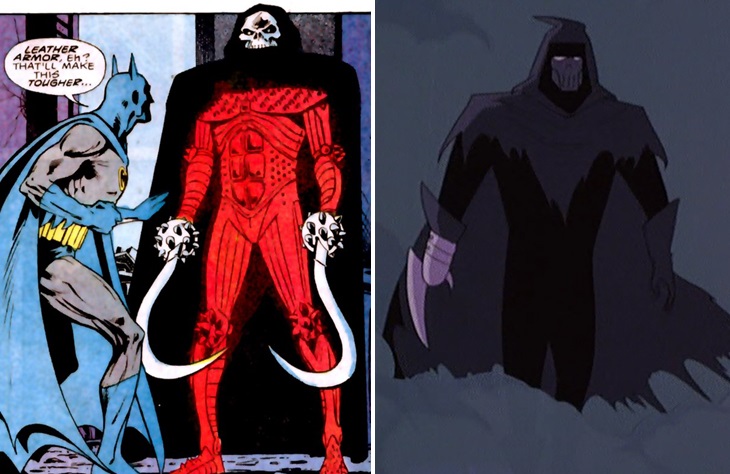
Bruce Wayne's love interest in the film is Andrea Beaumont. Andrea was an original character created for the film, but she was at least partly inspired by the character of Rachel Caspian from Batman: Year Two.
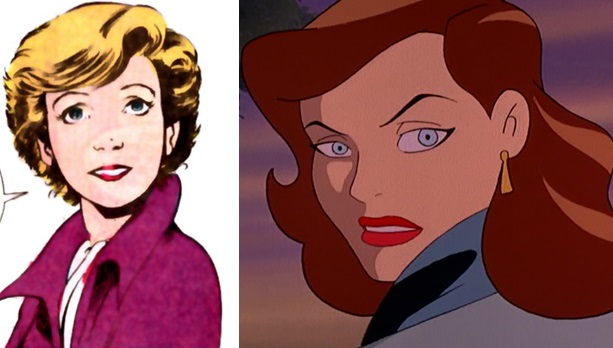
Rachel's father is a man named Judson Caspian, who returns to Gotham after spending some time overseas in Europe. His return coincides with the latest spate of killings attributed to the Reaper, leading Batman to suspect that Judson himself is the Reaper. Similarly, Andrea has a father in the film called Carl Beaumont, who also left Gotham to live in Europe. Batman uncovers a connection between Carl and the recently slain mob bosses and concludes that he is the dreaded Phantasm.
The scene where Batman visits his parents' grave at night is reminiscent of a scene from Batman: Year Two. So is the idea of Batman/Bruce talking directly to his parents as he questions his own actions.
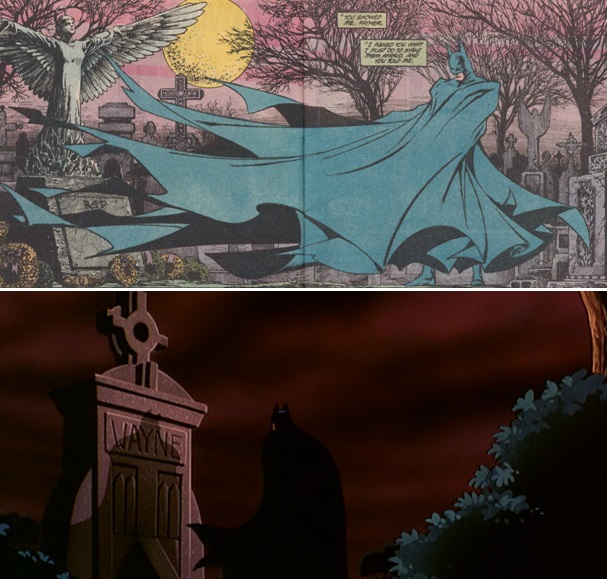
The film is interspersed with flashbacks depicting the early days of Bruce Wayne's crime fighting career. One of these sequences shows him attempting to confront a gang of criminals while wearing a ski mask and civilian attire. This was possibly inspired by the scene in Batman: Year One where the pre-costumed Bruce encounters Selina Kyle's pimp, Stan, and ends up getting wounded in the ensuing street fight.
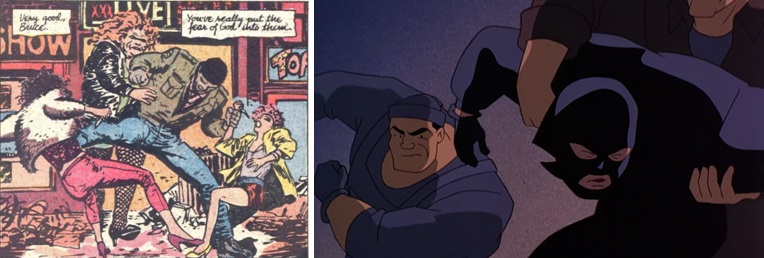
In both stories, Bruce realises he was at a disadvantage because the criminals didn't fear him. This realisation inspires him to adopt the costumed persona of Batman.
One flashback scene shows the young Bruce training outdoors on the grounds of Wayne Manor, which we also see him doing in Batman: Year One.
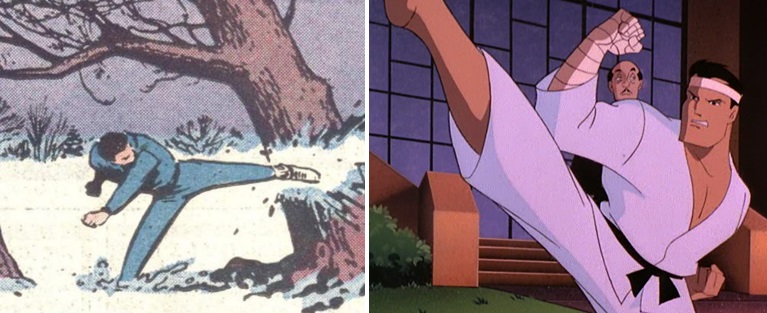
It is also during the film's flashback scenes that we see Bruce courting Andrea. Bruce also courts Rachel in Batman: Year Two, despite the fact she is about to become a nun.
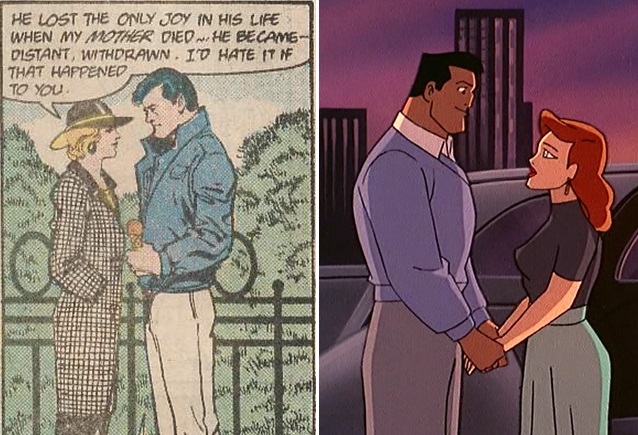
In the film, Bruce takes Andrea to the Gotham World's Fair. The World's Fairs have been visually referenced many times in the Batman comics and screen adaptations. Perhaps the most significant example would be New York World's Fairs Comics #2 (July 1940), the cover of which marked the very first time Batman and Superman were depicted together.
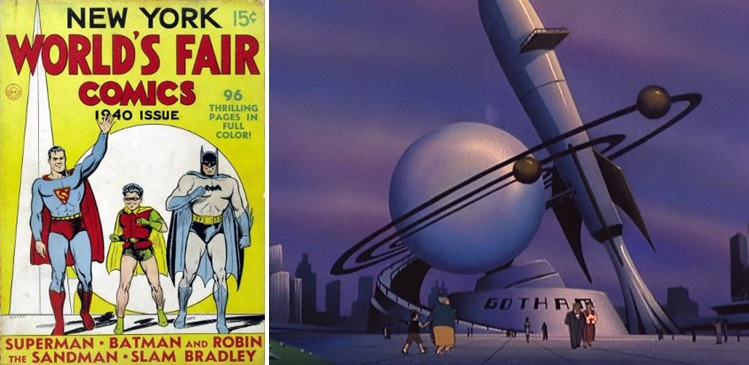
The flashback scene where Bruce and Andrea see a street vendor being robbed is similar to a scene from 'Did Robin Die Tonight?' (Batman #408, June 1987) where Bruce is out on the town with Vicki Vale. In both stories, Bruce spots a gang of youths attempting to rob an old man.
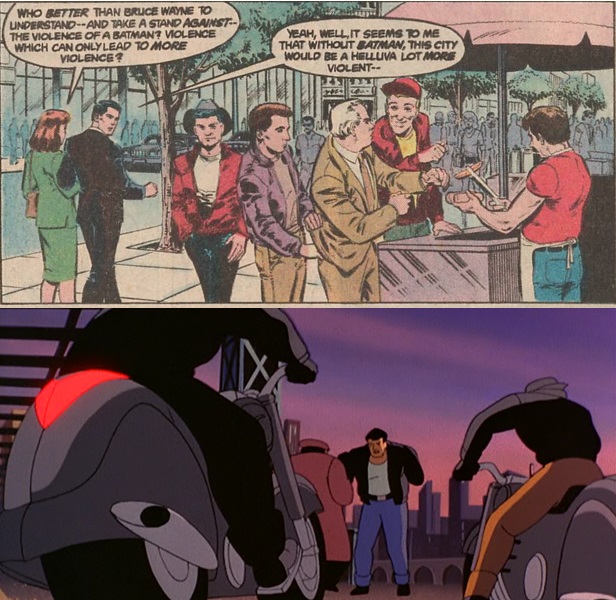
Ignoring his date's protests, Bruce chases after the hoodlums and engages them in combat.

But ultimately he is overpowered by the gang.
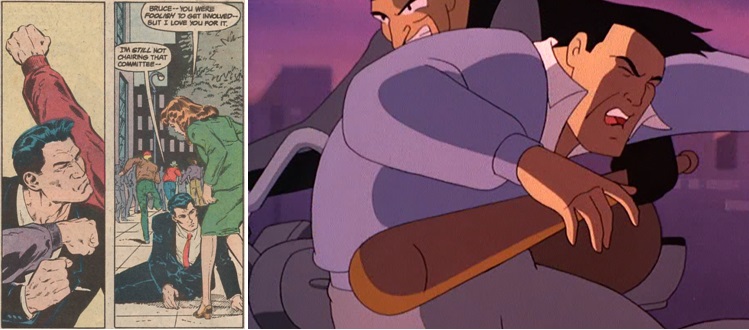
The relationship between Bruce and Andrea progresses to the point where he proposes to her and she accepts. Bruce and Rachel also become engaged in Batman: Year Two.
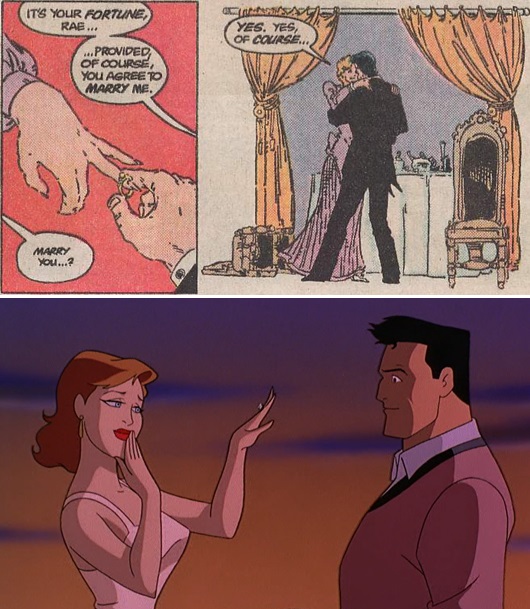
Bruce's fiancé introduces him to her father in both Batman: Year Two and Mask of the Phantasm. Bruce and Judson/Carl quickly strike up a rapport, much to the delight of Rachel/Andrea.
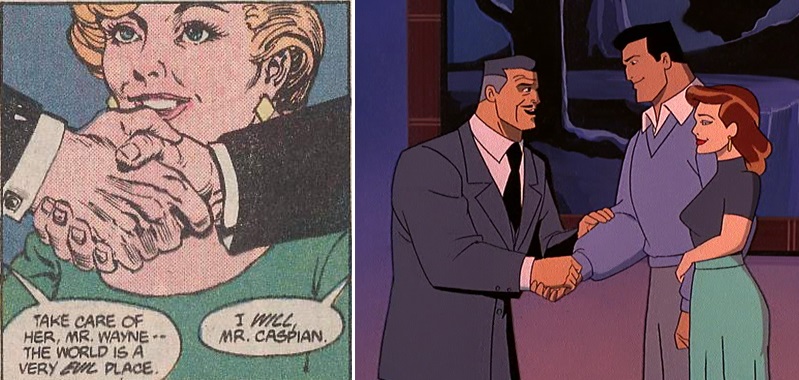
Another subplot in the film concerns Batman being targeted by a corrupt official named Reeves. Arthur Reeves first appeared in the comics in 'Death Comes to a Small Locked Room!' (Detective Comics #399, May 1970). As in the film, the comic version was a public official with an agenda against the Caped Crusader.
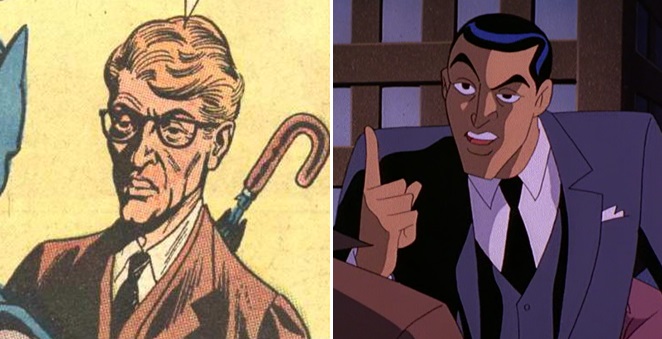
The scene where Batman is pursued by a GCPD SWAT team recalls similar scenes from both Frank Miller's Batman: Year One and The Dark Knight Returns (1986). There is also a scene in Batman: Year Two where Batman tackles a SWAT team.
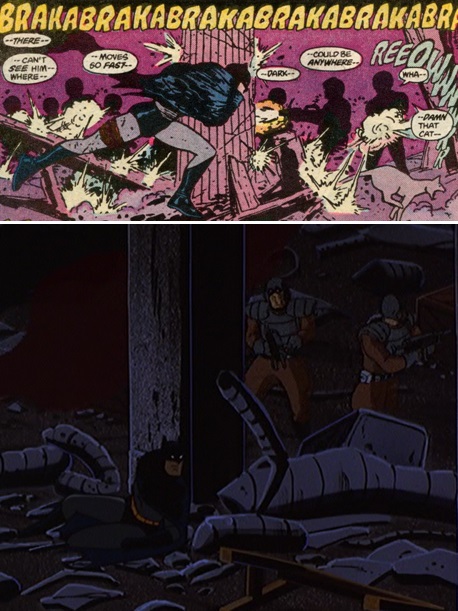
Year One has the most similar sequence to the film's, in which the GCPD SWAT team chase Batman into an abandoned building. In the film, a trigger happy SWAT member accidentally shoots a gas tank, causing an explosion that nearly takes out Batman. This echoes how Commissioner Loeb dropped explosives on the building to kill Batman in Year One. In both stories, Batman is injured from the encounter, but ultimately succeeds in escaping from the cops.
The Joker's back story in this film – and in the DC Animated Universe as a whole – follows the origin established in the 1989 Batman movie. This version of the Joker's past, where he was formerly a mob enforcer named 'Jack Napier', has occasionally been referenced as one of the possible origins for the comic book Joker.
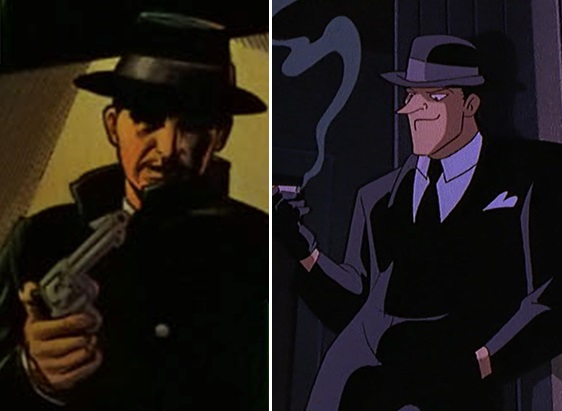
The Joker kills Salvatore Valestra in such a way that leaves his corpse with a smile on its face. This has been the Joker's signature method of killing since his debut story, 'The Joker', back in Batman #1 (Spring 1940).
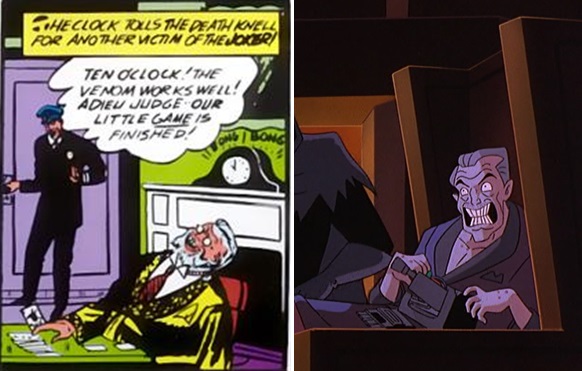
The idea of the Joker having his hideout in an abandoned amusement park is likely a nod to Alan Moore's 1988 story The Killing Joke.
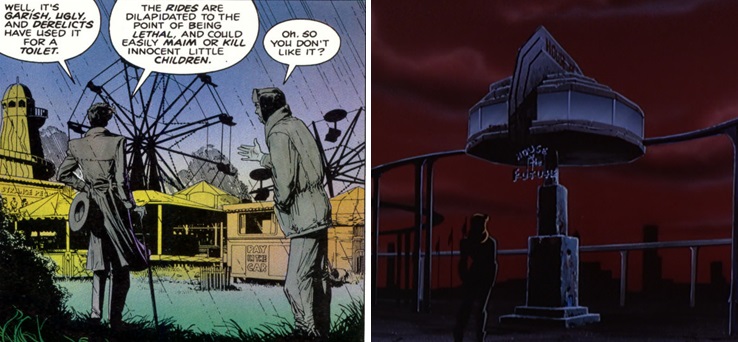
It is at this amusement park that the final confrontation occurs. In Batman: Year Two Bruce discovers the Reaper is Judson Caspian, the father of his beloved. In the film he initially suspects the Phantasm is Andrea's father, but then realises it is Andrea herself beneath the mask.
The final confrontation in Mask of the Phantasm has noticeable parallels with the finale of Batman Returns. Both showdowns take place in an abandoned amusement park, with Batman trying to prevent his beloved – whom he's recently learned is also his costumed adversary – from taking revenge by killing another criminal (Max Shreck/the Joker). In both films, the female character unmasks herself and holds her victim in a deadly embrace as a conflagration erupts all around them.
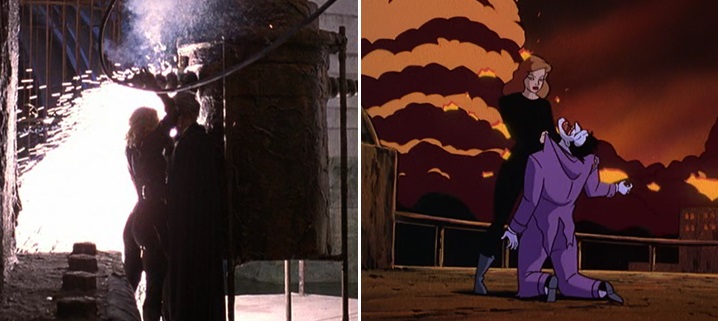
Batman looks on helplessly as both his beloved and her victim are engulfed in the chaos.
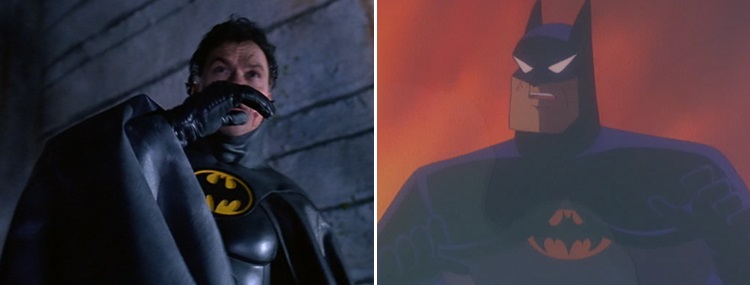
The scene in Mask of the Phantasm where Bruce spots something glinting in the cave and rushes to investigate is somewhat similar to the scene in Batman Returns where Bruce thinks he sees Catwoman's shadow in the alleyway. Both scenes show the heartbroken hero having his hopes momentarily raised, only to be crushed a second later.
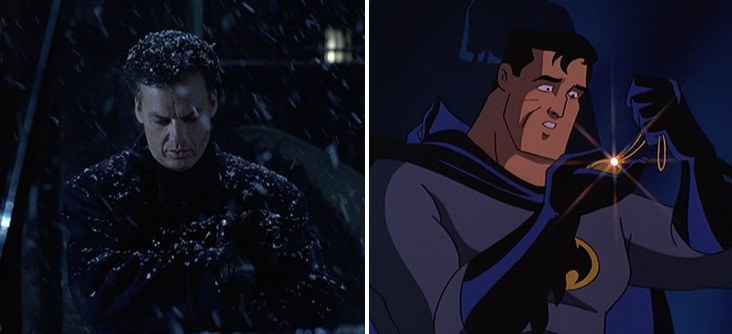
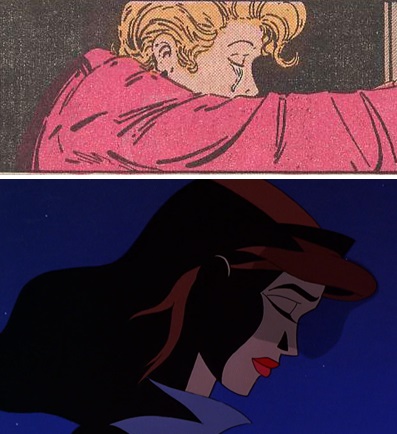
In both films we learn the female character did in fact survive: in Mask of the Phantasm we see Andrea standing alone on the deck of a ship, staring out to sea, while in Batman Returns we see Catwoman gazing up at the Bat-Signal just before the credits roll.
Bruce also loses Rachel at the end of Batman: Year Two, although the circumstances are somewhat different. Having learned that her father was responsible for the deaths caused by the Reaper, Rachel breaks off her engagement to Bruce and returns to her original plan of becoming a nun; hoping that in doing so she can continue performing good deeds to make amends for her father's crimes.
The final scene of Mask of the Phantasm shows the heartbroken Bruce seeking solace in his role as a crime fighter. Batman: Year Two ends on a similar note, and the final panel of the comic, like the final shot of the film, shows Batman swinging on a rope high above the streets of Gotham.
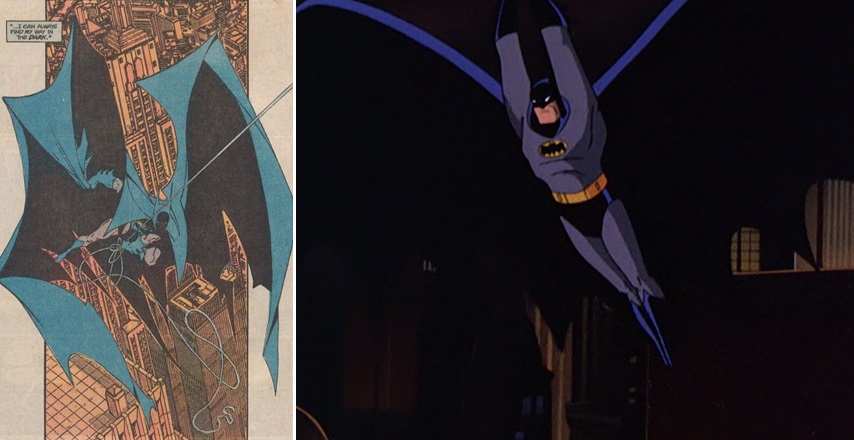
And that concludes this analysis of Batman: Mask of the Phantasm.
comments powered by Disqus













by The Dark Knight
by Silver Nemesis
by Silver Nemesis
by Silver Nemesis
by Silver Nemesis
by Silver Nemesis
by Silver Nemesis
by The Joker
by The Joker
by The Joker